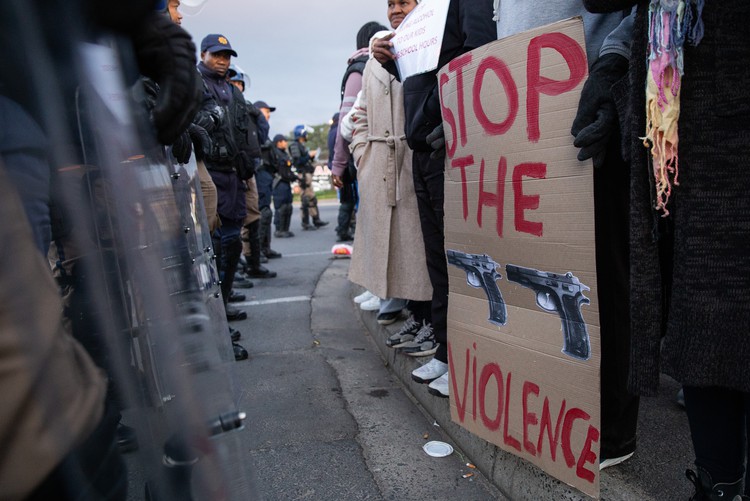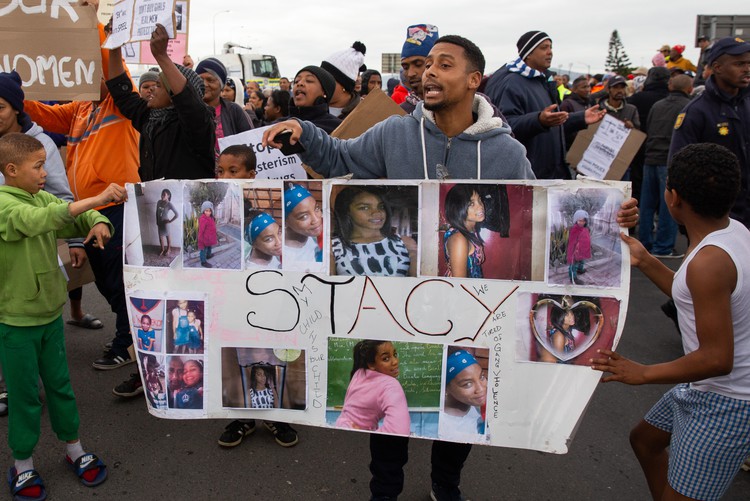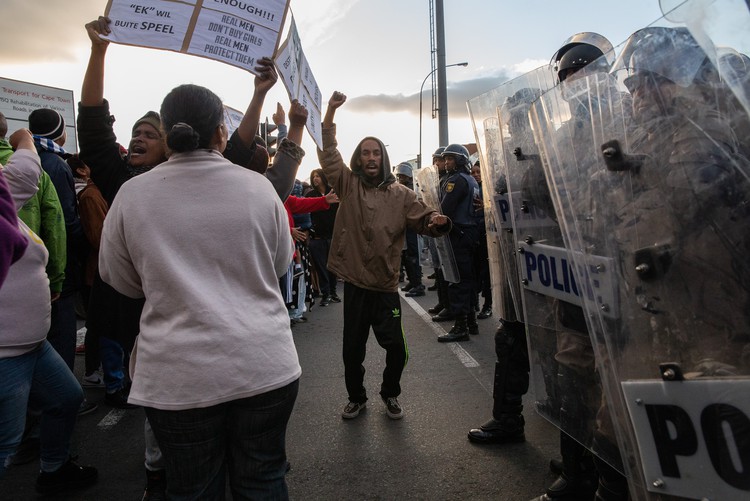Stacy Ganger, 12, died in gang crossfire in 2016. More than two years later, no-one has been arrested.
Bishop Lavis residents demand better policing
On a warm Saturday evening, Stacy Ganger was at home in Bishop Lavis celebrating a family birthday. Just before 9 pm, one of her friends came over and asked Stacy to go with him to the local shop. Stacy was 12 years old, bright-eyed and had plans to become a flight attendant. Minutes later, there was a shootout in front of the shop. Stacy was shot seven times. Twice in the head. Once through the heart. She died on the scene.
That was on 30 January 2016. More than two years later, no one has been arrested, says Charmaine Ganger, Stacy’s mother. “It is sad. It’s not right how our innocent children get killed during gang violence.”
Charmaine Ganger was one of hundreds who joined a protest to shut down Bishop Lavis on Wednesday, calling for more policing and an end to gang violence.
“I feel the pain of the other mothers, fathers and relatives who have lost children to gang violence,” said Ganger. Stacy’s family is still struggling with her tragic loss. Ganger has three children aged between 3 and 18. All of them and their parents are in therapy.
Another woman affected by gang violence is Melanie Paulse. She lost her brother Arial also in crossfire. He was 26 when he was killed on June 26 2018. It was his birthday. Months later, his sister hasn’t heard back from the police.
“It looks like they want the case to die,” said Paulse.
Her brother was not a gangster, she said. “He was a trumpet player.”
Paulse said the police were too scared to deal with gang violence. “Our children are getting murdered,” she said.
Demonstrators hold up photos showing Stacy Ganger’s life.
Residents gathered at several entrances to Bishop Lavis. At the corner of Myrtle and Valhalla Drive, hundreds of protesters held placards and chanted: “Enough is enough”.
At first the protest was relaxed, with residents drinking coffee and picketing. Some were even seen joking and taking selfies with riot police officers. SAPS, Metro and Public Order Police were on the scene making sure protesters stayed on the pavements. As the sun rose and the crowd grew, splinter groups broke off and marched down Valhalla Drive, disrupting traffic. Police quickly persuaded them to move off the main road.
After 8am, most of the protesters came together to block Valhalla Drive. Riot police used shields and stun grenades to force them back. When residents persisted, traffic officers blocked off a portion of the street, allowing them to continue their protest, watched by public order police and SAPS officers with a water cannon.
Religious leaders recited long prayers and community members shared experiences with gang violence. A memorandum of demands was handed over to SAPS.
The large police presence was noted by several residents, including Victor Altensteadt‚ a Bishop Lavis resident and president of the Bishop Lavis Action Committee. Police officers were not around when they were needed, said Altensteadt, “But they are here to stop us as the community.”
He said children in Bishop Lavis had no alternative but to join gangs. “Our kids are becoming child soldiers. Our young people are becoming gangsters. They are becoming drug peddlers.”
Residents attempted to block Valhalla Drive.
The protest was one of a series of marches against gang violence, due to culminate in mass action on 3 October, when several Cape Flats communities plan to shut down main roads and blockade entrances to their suburbs in protest.
According to the newly released 2017/18 crime stats, there were 98 recorded murders in Bishop Lavis, putting its police precinct among the top 30 in South Africa for murders.
This article will be updated with police comment if we receive it.
Video by Ashraf Hendricks
Next: UNAIDS director and HIV activist in legal battle
Previous: The protection of women’s rights begins with childhood
© 2018 GroundUp.
This article is licensed under a Creative Commons Attribution-NoDerivatives 4.0 International License.
You may republish this article, so long as you credit the authors and GroundUp, and do not change the text. Please include a link back to the original article.





